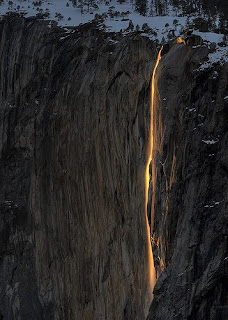The word photography comes from two ancient Greek words: photo, for "light," and graph, for "drawing." "Drawing with light" is a way of describing photography.
When a photograph is made, light or some other form of radiant energy, such as X rays, is used to record a picture of an object or scene on a light-sensitive surface.
In other words, Photography is simply capturing Light through exposure. To expose simply means to subject the film/ digital sensor in your camera to light. How we expose shall ultimately determine the final output - Talking of which, there are three most important parameters that define the outcome.
The aperture, shutter speed and ISO
An analogy for the concept is to think of taking photographs as filling a bucket of water. Imagine the following:
Water = Light;
Lens = hosepipe;
ISO = Bucket / bucket size;
Aperture = Diameter of the hosepipe
Shutter = Tap
Imagine that you are in control of a tap that provides water to this bucket. In doing so, you are in control of two things: how fast the water comes out and how long it takes before you shut the tap. Too little light results in an underexposed image, just as too little water results in an under-filled bucket. Too much water results in over filling, just as too much light results in overexposure.
Your end goal is being able to fill the bucket just to the top without spilling over (overexposing). There are infinitely many ways of doing this, but you must attain this specific value. For example, you can do this by letting the water come out very fast for a short time, or you can let the water drip slowly over a very long time.
The amount of time you let water [light] “pour in” the camera is called “shutter speed” and it can vary anywhere from seconds to minutes to hours sometimes
The amount of flow has its equivalent in “aperture size”[diameter of the hose pipe], which basically measures how big the opening that lets the light shine on sensor or film is.
These two values – shutter speed and aperture are intertwined. To get the correct exposure, both have to be set correctly – that is, if you increase the exposure time then you need to decrease the aperture.
Going back to the world of photography, In terms of exposure, it doesn't matter whether you use a larger or smaller diameter hosepipe [aperture] as long as the length of time the tap [shutter] kept open is long enough for the required volume of light to reach the sensor[exact amount of water to fill the bucket].
ISO = constant; Higher the aperture value = lower the shutter speed
ISO = constant; Lower the aperture value = Higher the shutter speed
There are other considerations and consequences of using different apertures and shutter speeds. It's the balancing of these factors which determine how a photograph is exposed. That's why taking a photograph is just like filling a bucket
As said above, shutter speed measures how long the actual "exposure" takes. Shutter speed works on a double/halving scale - 2 seconds 1 second 1/2 seconds 1/4 seconds 1/8 seconds 1/15 seconds etc.
Aperture on the other hand is expressed as F-values like F1.8 - F2.8 - F4 - F5.6 - F8 - F11- F16 etc...
ISO values basically denote how sensitive the image sensor / film is to the amount of light present. ISO values range from 50 to even 3200 these days - the higher the ISO, the more sensitive the image sensor.
To recap – ISO, Shutter speed and Aperture form the fulcrum of good exposure to Light – the science of which we shall continue in the next blog as well.
Following up on last week’s terrific click from the Rock fort in Trichy – let us know what you think of this classic:

Icon of Khmer civilization, Angkor Wat in Cambodia endures as a revered religious shrine.
Hari Kumar Balasundaram














